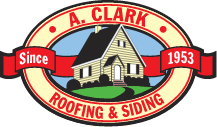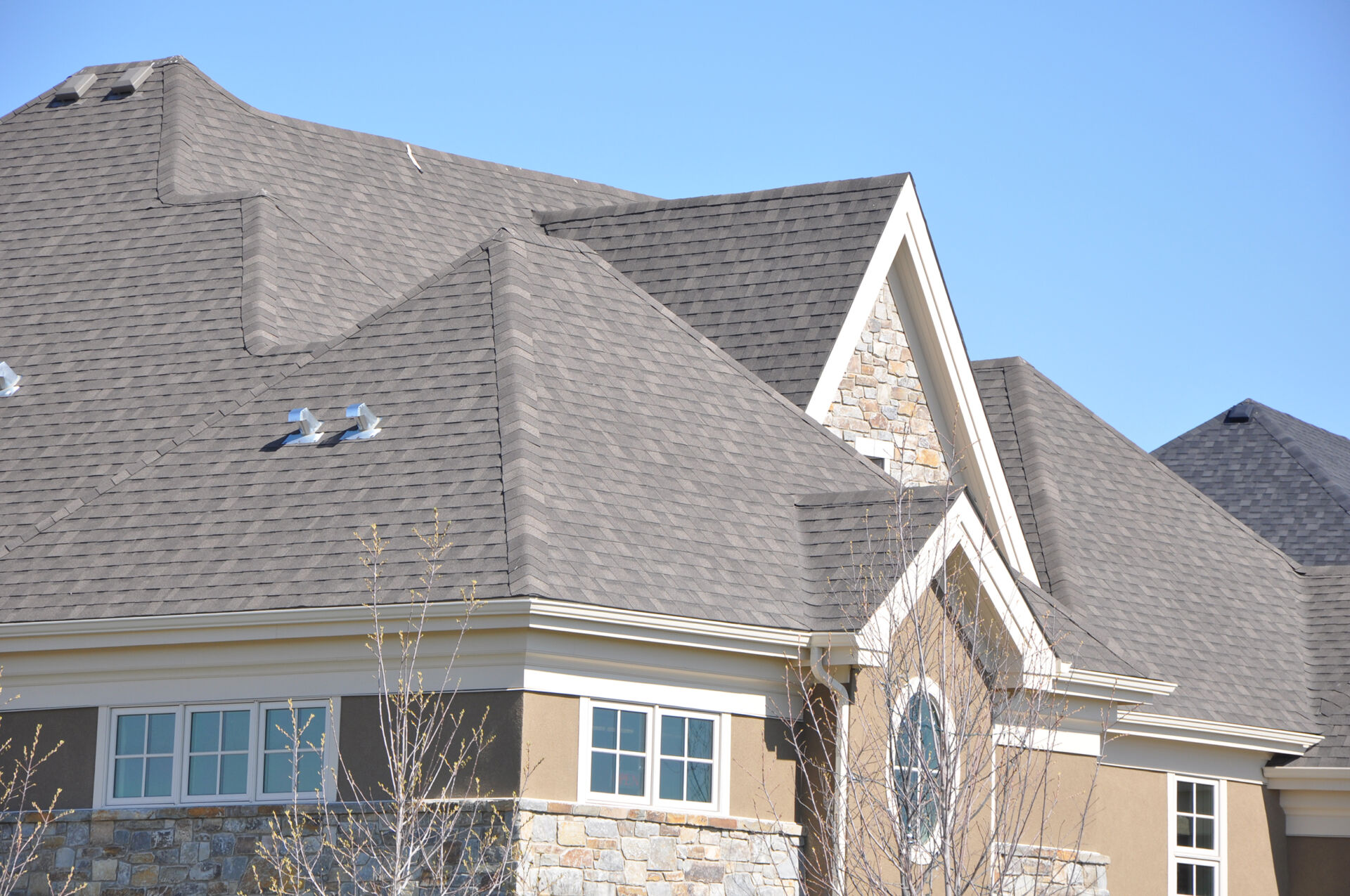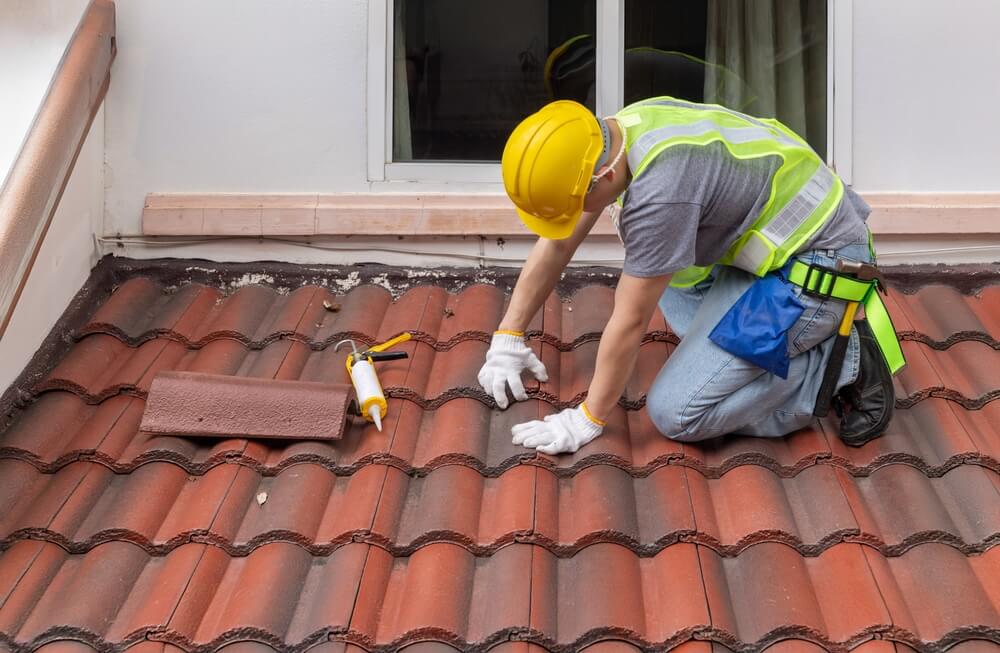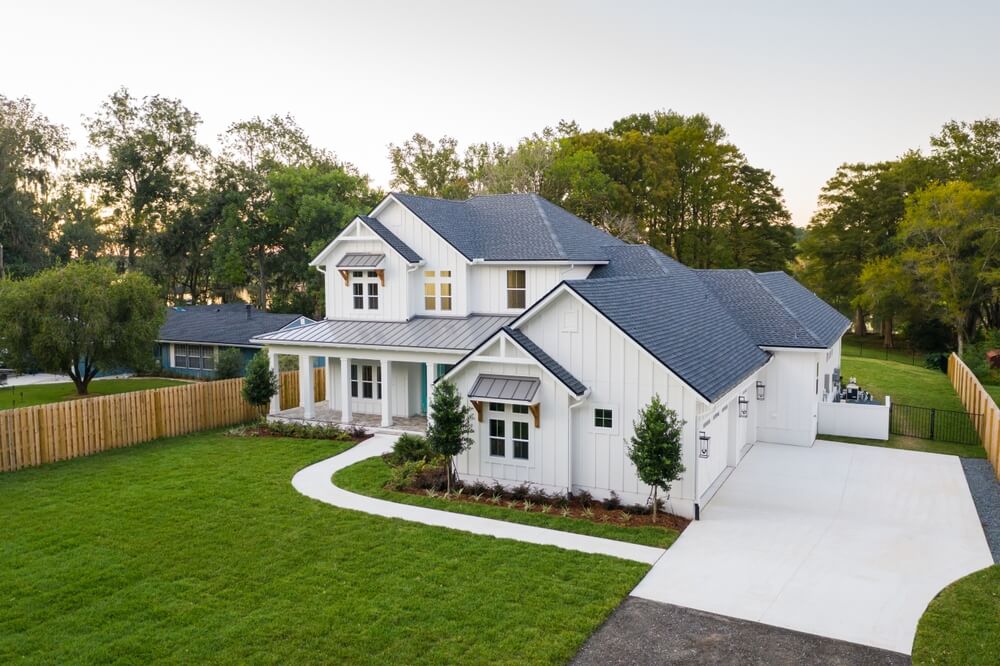What goes into your roof?
Easily the most common type of roofing provided by Alberta roofing companies, shingles are popular among homeowners for their affordability, durability, and aesthetic appeal. However, there is much more to your roof than just the shingles – an entire roofing system works with your shingles to protect your home. If you’re curious about the process involved in installing a roofing system with shingles, then here is a brief, step-by-step overview from the roofing contractors at A. Clark Roofing & Siding LP
Sealing: The first layer of defense
Roof deck (wood sheathing/sheeting)
The roof deck (or sheathing) is the first layer of roofing material after your home’s structural elements like trusses. The roof deck provides the foundation for the rest of your roof and consists of wooden boards fastened to the structure of your home to support the roofing system and materials, stabilize the rafters of your home and hold your entire roof together. Typically made up of oriented strand board or plywood, it is important to install this correctly, as the base for your home’s roofing system can impact your warranty and the lifespan of your roof.
Drip edge
Installed around the edge of your roof, the drip edge creates a seal on the edge of your roof, and controls the flow of water, protecting your roof and your home from leaks. Made of metal, the drip edge is installed over top of the underlayment, holding it down, and underneath your shingles.
Ice and water shield
Ice and water shields are a waterproof underlayment used to protect areas of your roof that may be particularly susceptible to moisture. Made up of rubberized asphalt, the shield adds an extra layer of protection for your home from the heavy snowfall in Edmonton and Calgary. Installed after the roof deck or sheathing and before the remainder of your underlayment, the ice and water shield is typically installed on eaves, valleys, overhangs, and anywhere else that may be more vulnerable to ice or moisture buildup.
Felt underlayment
This layer of your roofing system covers the entire roof, and is the last layer of protection before your shingles. Typically made of heavy black felt, there are also synthetic options available.
Protecting: Creating a layer or durable protection between your home and the elements
Starter shingles or strips
Installed in a strip on top of your roofing underlayment at the eave and rake edges of your roof, the starter shingles are the very first step in the shingle process. The remainder of your shingles are installed in an overlapping fashion in order to create a waterproof barrier for your home, but as the first layer has nothing underneath it cannot be overlapped. The starter shingles provide a seamless barrier, on top of which the other shingles are installed. In addition to ensuring proper sealing and protection of your home, the starter shingles also provide a straight line to facilitate the uniform installation of the rest of your shingles.
Shingles
The main field of shingles are installed in a staggered and overlapping fashion depending on the manufacturer’s requirements starting from the bottom and working their way up. These shingles will overhang with the starter strips at the edges of a roof according to building codes.
Minimally full shingles require 4 nails, but we recommend always 6 nailing (also called storm nailing) to achieve a higher wind warranty at no extra cost. Some larger shingles require more nails. Once fastened and exposed to warm weather, the shingles start to seal together. Shingles come in different shapes and sizes and it is important to pick the shingle that has the strengths to meet your needs.
Shingle capping
Shingle capping, or hip and ridge shingles, are installed at the peak of your roof. These are the last shingle installed in your roofing system, to ensure overlap of the remainder of the shingles. In addition to providing full coverage for your roof peaks, they also provide curb appeal by adding a finished look to your roof and accentuating the roof peak.
Flow: Ensuring proper air and moisture flow in your roof
Vents
Vents are an important part of your roofing system and ensure proper airflow which can reduce ice damming and moisture. It is critical to install the appropriate number in your roofing system to allow for airflow and attic ventilation. Attic vents should accommodate the building code minimum of 1 sq ft of ventilation per 300 sq ft of attic space or 1/300 on standard roofs and 1/150 on lower sloped roofs. Mostly these are located at the roof peak or ridge to allow air to exhaust. Depending on the attic space and soffit system, intake vents may also be placed near the eaves.
Flashings
Installed and sealed around vents, chimneys, skylights and valleys, roof flashing is a thin metal used to control the flow of water on your roof.
The benefits of hiring a professional roofer in Calgary & Edmonton
If you don’t have any experience with roofing, then you’ll be much better off hiring experienced local roofing contractors. There are many benefits to hiring a trusted local Edmonton and Calgary roofing company to install your shingles and roofing system, including:
- Ensuring that your roofing elements are installed correctly and that they are capable of protecting your home for many years to come.
- Working on your roof is dangerous, and requires knowledge and the right equipment to keep you and your roof safe. Professional roofers spend almost every day on rooftops, and know how to get the job done safely.
- A professional roofer will notice and assess your roof while performing the job. If you have other issues going on with your roof, a professional will be able to identify them while they are working on your roof, potentially saving you from any issues getting worse. The professionals at A. Clark Roofing & Siding will provide a free quote or consultation for any issues you have, so you can get a no-obligation quote.
- Your home will be protected under a workmanship and parts warranty, which won’t be the case if you choose to install shingles yourself.
At A. Clark Roofing & Siding LP. We provide roof installation and roof repair in Edmonton, and Calgary. To speak to our roofers about installing your roof, just contact A. Clark Roofing & Siding LP. today for a no-obligation contactless quote.




